The attacker came on the night of Feb. 22nd, 2016, aiming for 73-year-old Robert Dodoo – in his home outside the Ghanaian capital, Accra. The weapon of choice: a paint bucket full of acid. But also at home was Robert’s 16-year-old son, Andy, who instinctively intervened to protect his father. Andy took the brunt of the attack, as most of the acid splashed onto the right side of his body.
While his father’s wounds were more superficial. Andy’s burns were so severe, he’d be hospitalized for the next two months. Early on, with Andy unable to eat, as his muscle mass atrophied and damaged skin peeled from his right arm, leg and groin, all the medical staff could do was try to keep him alive: feeding him intravenously and pumping him with both pain-relief meds and antibiotics – to fight the infections that might prove deadly. Even if Andy survived this trauma, he faced a life of permanent disfigurement.
That is, until the Ghanaian Diaspora roared into action – led by the New York-based non-profit, Sustainable Initiatives & Alliances in Africa. Nine years and six skin-grafts later, Andy today lives pain-free in America – specifically, in Boston – where he’s married and works full-time.
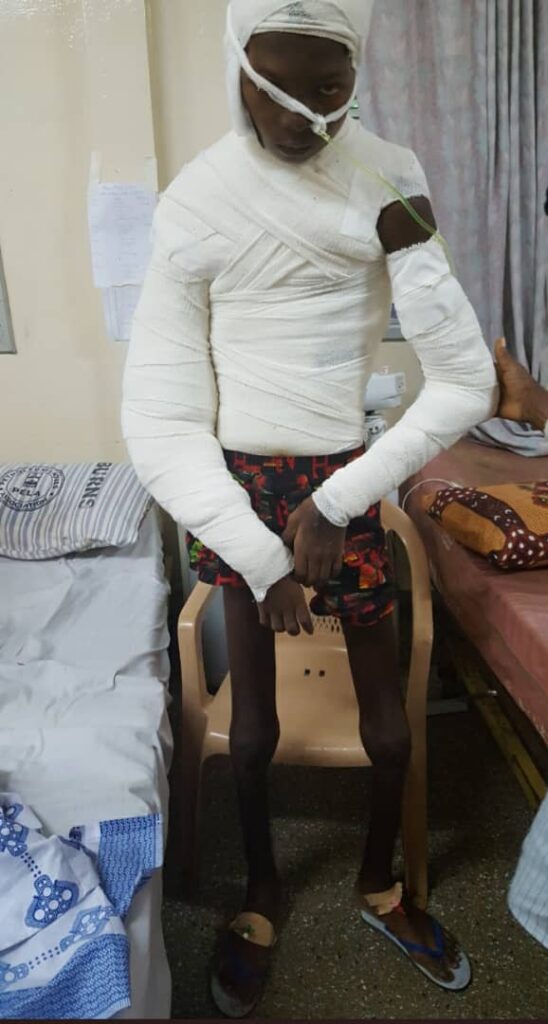
Andy during his hospitalization in Accra.
His older brother, Rifkin, who played a vital role in Andy’s Road to recovery, marvels at his remarkable journey. “I couldn’t have envisioned that he’d be doing as well as he is today,” says Rifkin, via a Zoom call to Accra. “It’s amazing. He even has an American accent!”
Rescuing Andy was a unique project for SIA-Africa, though it also reflects their work on behalf of African youth. Founded in 2012 by Nene Kodjoe, a Ghanaian who’s lived in New York more than 20 years, SIA-Africa matches donors and other resources with organizations on the frontlines. Cooperating with a range of partners, from educational institutions to small businesses, the aim is to make a meaningful difference in the lives of young Africans – from high schoolers to emerging professionals.
By enhancing their educational and economic opportunities, it supports SIA’s broader objective to help transform and develop African institutions – to facilitate a brighter future for youth. Yet, intervening in Andy’s urgent situation was unique, as it centered on enabling him to have any future at all. For him, SIA-Africa was once again a matchmaker: matching people and resources to his life-saving needs.
This extraordinary story begins in the wake of the 2016 attack, when Andy’s older brother, Rifkin, began writing about what had happened to him. Specifically, Rifkin publicized Andy’s saga – and updates about his horrific condition – within the vast network of Accra Academy alumni. Rifkin is a proud graduate.
Rifkin notes that for this “strong and vibrant” community of alums, which stretches from Africa to Europe and North America, Andy’s story became newsworthy: “Because of the nature of the attack and the fact that a 16-year-old intervened to protect an older man, his father. It was a compelling story.”
Among those reading Rifkin’s updates was Kodjoe, a fellow Accra Academy grad whose own younger brother was a good friend of Rifkin’s from their schoolboy days. In learning how little was being done to heal Andy, Kodjoe, from New York, reached out to Rifkin: “He said ‘What are you guys doing about this?’ How are we going to deal with it? We can’t just watch the boy die.’ Those were his exact words.”
With few options available in Ghana, Kodjoe pledged to help a family he’d known for years. SIA-Africa then took two actions: the organization sent Sam Kujo, founder of partner organization Civil Corps, from the US to Accra to assess Andy’s circumstances – and his needs. Next, SIA-Africa created a GoFundMe campaign online, to pay for the best possible care for Andy. This proved to be a life-altering move.
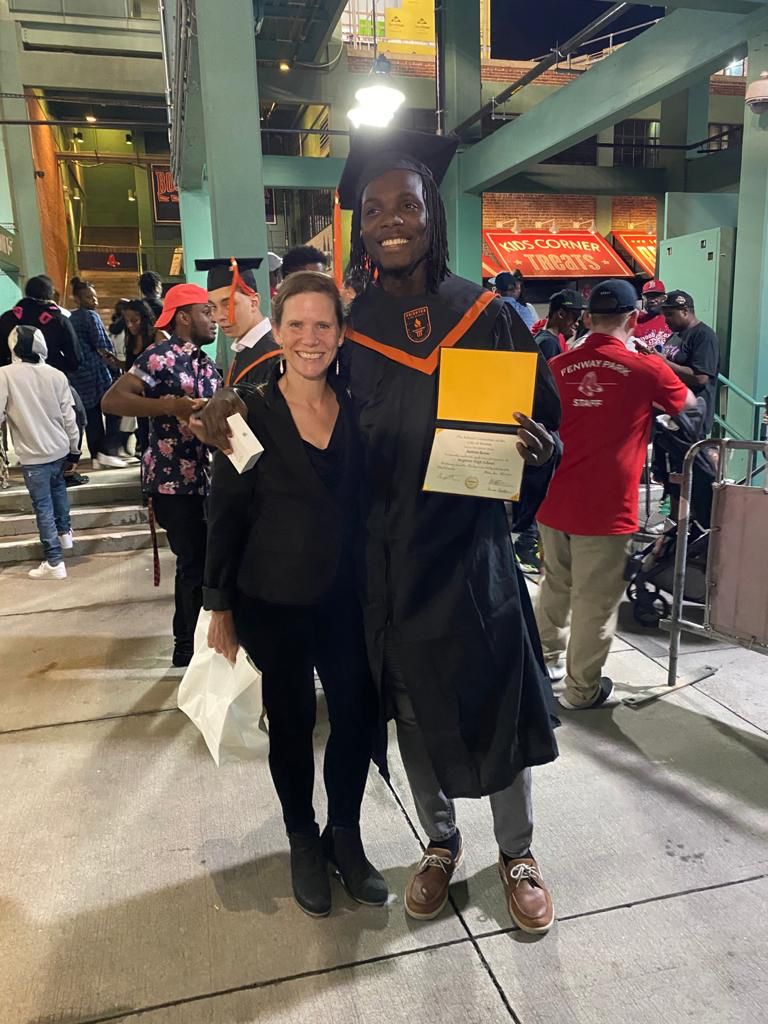
Andy eventually recovered well enough to
graduate from a Boston high school.
While many Westerners are familiar with online fundraising platforms like GoFundMe, as a modern, often-trustworthy way to attract support for worthy causes, Ghanaians had already grown wary of online scams. Especially, those with a heart-wrenching story, claiming to assist some poor victim.
So, this GoFundMe campaign was more than a generous gesture from the Ghanaian Diaspora, says Rifkin. It played a pivotal role: as a nonprofit organization registered in New York, with a New York-based IP address, SIA-Africa lent its name, reputation and institutional credibility to the campaign. That infused it with both credibility and accountability, which brought immediate reassurance to donors.
“Usually, when you want to raise funds for someone who’s in dire need – as Andrew was at the time – it’s going to be difficult unless you’re able to make the story authentic,” says Rifkin. “SIA’s support gave it a certain level of authenticity and accountability for those who wanted to donate.”
It wasn’t only reassuring to Ghanaians in Ghana, like former President J.J. Rawlings who made a significant donation, but for the Ghanaian Diaspora and other generous donors from various ethnic backgrounds. Donations of $10, $20, $50 began to arrive from Europe and America. “Quite a few people know me, so when I mentioned that it was my brother, everyone was like, ‘No way,’” says Rifkin. “When they learned about this New York organization doing it for a boy who’s dying, they thought: ‘We need to help this young man, too.’”
Amid this fundraising, another crucial moment occurred: an American woman named Michele found the GoFundMe campaign and left a comment, suggesting one particular US healthcare partner that might treat Andy for free: the Shriners Hospitals for Children, a network of 22 facilities in the US, Canada and Mexico. That suggestion ultimately led to Shriners Children’s Boston – and its Pediatric Burn Care unit.
Rifkin, who by then was managing the GoFundMe account – and providing updates of Andy’s recovery – Googled Shriners. He called the hospital to explain Andy’s plight; they expressed interest in helping. But first, they sent Rifkin a checklist: to confirm his identity and vaccination status, but also whether the Dodoo family had funds to fly Andy and Rifkin, as his guardian, to Boston. Plus, pay for accommodations.
“The hospital said, ‘Look, if you're able to fulfill these requirements, we'll see what we can do,’” says Rifkin. He secured his brother’s personal data and delivered on those requirements, which led the Shriners Hospital to pledge to treat Andy for free – and eventually perform six skin-graft surgeries.
With Shriners in mind, the GoFundMe fundraising focus turned to covering the financial costs of that trans-Atlantic voyage – for the brothers, plus one more. The hospital in Accra was concerned about Andy’s trip – and his high risk of infection. They wanted a Ghanaian doctor to travel with them – an additional cost that was later covered by SIA-Africa Vice President Sam Stephens.
Other volunteers played crucial roles, too. Marianne Carroll was an SIA-Africa volunteer who invested time and resources to expedite Andy’s US visa, by engaging with both the Ghana Mission to the UN and the US Embassy in Accra. She later also provided accommodation and financial resources to Rifkin in New York City, and visited Andy at Shriners in Boston, on behalf of SIA-Africa.
Meanwhile, Rev. Nana Daquah – a Ghanaian pastor living in Providence, Rhode Island – also generated fundraising through his church, which financed hotel accommodations for Rifkin and Andy.
By the end, the GoFundMe campaign raised $9,000 – not an enormous sum, but enough to cover that journey and deliver Andy to Shriners Children’s Boston. He then spent the next three months there – 88 days, to be exact – as the doctors and nurses provided him with six needed skin surgeries, to repair his body as much as possible.
Next came hours and hours of physical rehabilitation. All at no cost.
“For all initiatives, our mission is to work with our partners and donors to match resources to beneficiary needs,” Kodjoe, the
SIA-Africa Founder, reiterates today. “We had to do everything possible to get Andy out of Ghana. Without the SIA-Africa ‘vehicle,’ we believe he would have died there.”
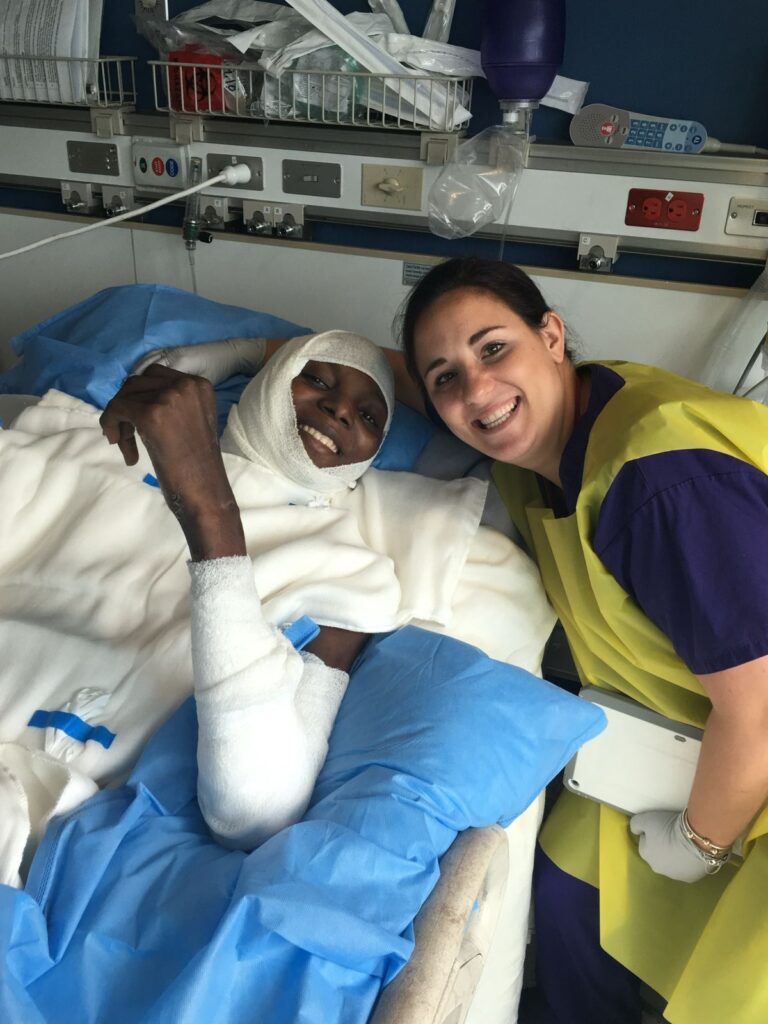
Andy at Shriners, after his six skin grafts.
Shriners did more than reconstruct Andy’s body; they gave him a second chance to live a normal life. He not only graduated from Brighton High School in Boston, but even more remarkably, he returned to his passion: football. At a high level, too: he played soccer at the Massachusetts College of Liberal Arts.
Andy, now 25, says he might not be alive if not for SIA-Africa and the entire fundraising campaign. Nearly two years ago, he also married a woman who loves him – and his scars. They’ve healed as much as they can. More important, he enjoys life pain-free, with full mobility: “I’m 100% good, really.”
The only discomfort, he notes, is occasionally on his severely burned arm: on hot days, in direct sunlight, it’ll cause a tingling sensation. He says he accepts such inconveniences – and if anyone ever stares at his damaged arm. “If there are scars, there are scars,” he says. “If it gets attention, ‘Hey, this is my body.’”
Looking back, Andy says he was largely oblivious to all the efforts being made on his behalf. “I was just a 16-year-old boy, living my life. But after that incident happened, I was in a terrible situation, obviously. But Rifkin took it upon himself to do something about it. He contacted so many people who could help me, while I was just completely paralyzed – fighting for my life. I didn't really know much about the outside movement and all this SIA stuff. But as time went by, Rifkin told me about the plan to bring me to the US for treatment. At first, I thought he was just saying that to get me to take my medications, because I didn't like taking them. Then I found out this whole thing was actually legit.”
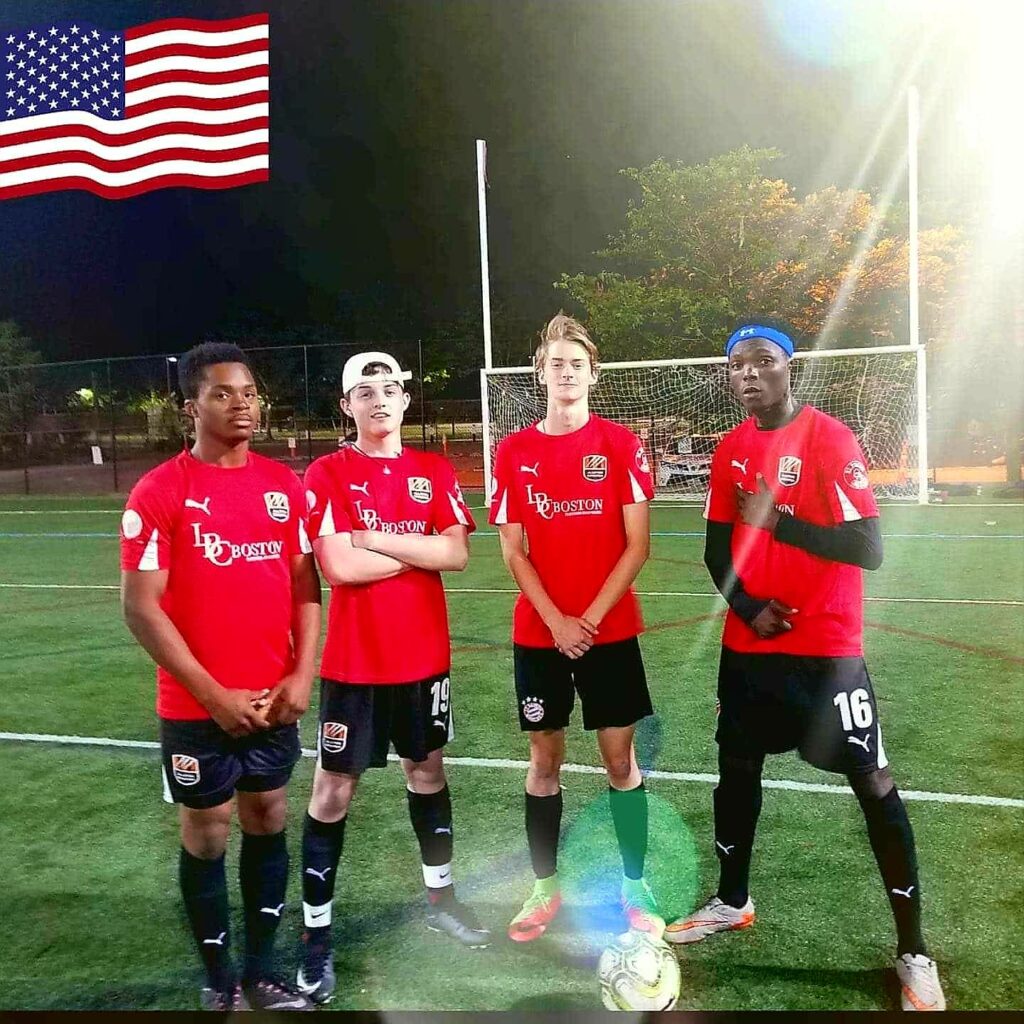
Remarkably, Andy returned to his love of football.
As for the financial support from strangers, Andy says: “I’m speechless about it. So many people who didn’t even know me, but decided to donate and help me get to where I needed to go. For that, all I can say that I’m truly grateful to every single person who helped me through this whole process.”
He says he’s also touched by how the Ghanaian Diaspora, specifically, rallied to support a compatriot. “In a way, that’s how it should be: if one of your own is going through something like that, showing massive support is such a beautiful thing,” says Andy. “And today, look at me. I'm not in as bad a situation as I could be, where I’m completely miserable. Yes, I went through a tragedy and all that stuff. But here I am, moving on with my life, even living a better life. So, for all the people who helped me, they not only did a great thing, but I can also say: It didn't go to waste.”
His big brother, too, marvels at Andy’s evolution, and gives credit to SIA, donors and the Shriners team. “It’s a gift that God gives, if you’re able to help someone like this,” says Rifkin. “It brings me joy to think that Andrew would have been far worse off. But look at him today: he’ll become someone who can also help others in the future. It’s an extraordinary story – and even bigger today than it used to be.”
Andy agrees that one day, he’d like to similarly make a significant difference in someone else’s life. “If you see a friend or a stranger – just a human being – going through something huge like this, like on the edge of dying, of losing their life, if you can do something to support them, you should,” he says. “To help keep the person alive, that’s just greatest thing you can ever do for someone else.”
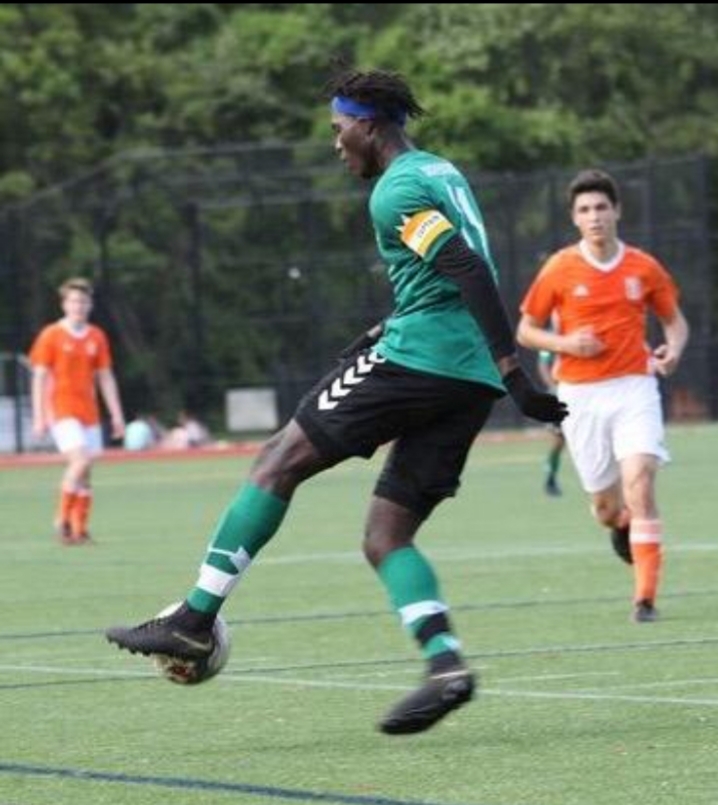
Andy's story is one of true resilience.
Michael J. Jordan conducted the interviews and wrote this story.
One month has passed since gunmen stormed the Garissa University College in Garissa, Kenya. There were no massive rallies, with crowds chanting, “Je Suis Garissa,” but perhaps we don’t need massive rallies. What we need are strong institutions. In his 2009 remarks to the Ghanian Parliament, U.S. President Barack Obama said, “We must support strong and sustainable, democratic governments. Africa doesn’t need strongmen, it needs strong institutions.”
On the morning of Thursday, April 2, 2015, the western world awoke to news reports unveiling another terrorist attack. Gunmen loyal to Al-Shabaab shot their way through a quiet university campus, killing students in dormitories where many were still sleeping. By the time the attack was over, 147 innocent lives were brought to an end, and 79 others were wounded in a cowardly effort to terrorize East Africans over Kenya’s support to the African Union and its effort to fight Al-Shabaab in Somalia.
Our thoughts and prayers continue to be with those who lost family and friends and those injured and traumatized by this heinous act of terrorism.
Witnessing the aftermath of the 2013 attack on the Westgate Mall in Nairobi, Kenya, and numerous terrorist incidents in Kenya, Nigeria, Mali and several other locations across Africa, I’ve drawn several conclusions.
Institutions in Africa are very weak and all stakeholders, including the West, should invest in developing strong, sustainable institutions. There is a lack of coordination among AU member States. Member States should consolidate their efforts in the areas of security and intelligence. Without well-planned and well-designed city and town infrastructure in Africa, the ability to tackle terrorism and other crimes will be impossible.
Since 1998, starting with the U.S. Embassy attacks in Kenya and Tanzania, I have witnessed the pain and sorrow associated with the indiscriminate acts perpetrated by amorphous groups and faceless cowards. They believe they can achieve the objectives by using fear, intimidation, scare tactics and the murder of innocent, non-combatant people, including children.
I am still puzzled by the ineffectiveness of institutions in Africa and how weak they remain. My questions: did intelligence agencies have any knowledge of these criminal elements? How easy is it to acquire weapons in Kenya? Did they smuggle their weapons into Kenya? How far is the local police precinct from the school? How long did it take for Kenyan security forces to respond and how many times did they get lost before they arrived at the school? How much does poor city-planning affect communities in Africa in times of emergency? Could a well-designed building with secured entrance and exit points have made a difference? Are stakeholders taking concrete measures to ensure this does not happen again?
Perhaps it’s time the G8 countries, BRICS, development organizations, corporate entities and governments in Africa invest heavily in sustainable infrastructure, including efficient energy resources, water resources, low-income housing, educational infrastructure as well as infrastructure in healthcare, criminal justice, transportation, private-sector and technology.
As Africa awaits the surge in coronavirus cases seen in Europe, Asia and the U.S., research groups around the globe are working on new technologies focussed on combating the pandemic. New rapid testing kits developed in Ghana and Senegal seem a promising breakthrough to help African countries cope.
Until a vaccine is developed and made available, large-scale testing has been unanimously recommended by virologists as a key strategy in the fight against coronavirus. Testing provides vital information regarding the spread of the disease, enabling governments to take the necessary steps to break the chain of transmission.
Widespread testing is proving difficult in many countries, whether that be due to ineffective organisation or lack of resources. This is even more of a problem in Africa, where some healthcare systems are weak, sanitation is poor and testing facilities are sparse.
The current commonly used method of testing detects the presence of the SARS-COV-2 virus that causes COVID-19. The viral genetic material is amplified to a detectable level using PCR which requires technical training and expensive equipment. This form of testing takes up to 48 hours to return results; of which potentially 30% are false negatives, most likely due to inadequate sampling from the patient’s airways. This means the spread of coronavirus in these countries could be worse than the statistics suggest.
For widespread testing across Africa, a low cost, point-of-care kit is needed and recent developments in Ghana and Senegal may have found a promising solution.
Collaboration between the Kwame Nkrumah University of Science and Technology (KNUST), Incas Diagnostics, and the Kumasi Centre for Collaborative Research (KCCR) has led to the development of a rapid COVID-19 testing kit in Ghana. This test kit uses a finger-prick blood sample to detect a patient’s immune response to SARS-COV-2, providing a positive or negative result in 15-20 minutes.
When a patient is infected with the SARS-COV-2 virus, their white blood cells secrete Y-shaped molecules, known as antibodies, that specifically bind to the outside of the virus particle. Once bound, these antibodies recruit other white blood cells that can destroy the virus. Antibodies can remain for a long time after an infection has been cleared, providing the patient with immunity against the disease. However, it is currently unknown how long the antibodies against SARS-COV-2 last. Furthermore, it can take some time for the body to produce antibodies that successfully bind to the virus, meaning an infection can cause a great deal of harm before the immune system has evolved to fight it off.
The specific binding mechanism of antibodies makes them a suitable target for detecting an immune response in a patient and this is what KNUST and Incas Diagnostics have utilised.
One of the main benefits of antibody tests is that they can be used to diagnose asymptomatic cases and those that have recovered from a previous infection, identifying a proportion of the population with immunity. These people could work safely on the frontline and possibly donate antibody-rich serum to treatment programmes for critical patients.
The lateral flow-based kits also require minimal equipment and technical training, providing a promising answer for testing in countries with weaker healthcare systems and rural communities with fewer resources.
However, just like the PCR method for COVID-19 testing, there are some limitations associated with the rapid diagnostic kits. For example, antibodies are only detectable at least seven days after infection, leaving a time window in which false negatives may occur. Antibody testing kits developed by other research groups have also lacked accuracy when tested by independent laboratories.
Professor John Newton, leading the UK’s testing programmes, stated “[they] had been able to identify antibodies in patients who had been seriously ill with coronavirus but didn’t pick up the milder cases”.
The Pasteur Institute in Senegal, who has previously worked on yellow fever and dengue vaccines, has also developed a rapid COVID-19 testing kit using similar antibody-based technology.
The test kit prototype has been produced in collaboration with Mologic, a British biotechnology company co-founded by the creator of the Clearblue pregnancy test. Like the kit developed in Ghana, this 10-minute COVID-19 test uses either a saliva swab or blood finger prick sample to detect antibodies against SARS-COV-2.
Mologic’s website states their mission is “to make high quality diagnostics affordable and accessible on the global market” and Joe Fitchett, the Medical Director, has said that their rapid test kit would be sold at cost-price (approximately $1) thanks to generous grants from the Bill & Melinda Gates Foundation and the UK Government.
Both rapid testing kits are being assessed by independent laboratories and are awaiting government accreditation. If an affordable, point-of-care diagnostic tool can meet regulatory standards for widespread use, it could have a huge impact on Africa’s fight against coronavirus.
Sustainable Initiatives and Alliances for Africa is making big strides as it develops partnerships and facilitates opportunities for female entrepreneurs.
SIA-Africa recently selected Ms. Hillary Andoh, to participate in SIA-Africa’s Bloomberg-Gabai Initiative to participate in a roundtable discussion organized by The Wilson Center Africa Program and Ms. Rahama Wright, a member of the President’s Advisory Council on Doing Business in Africa. Ms. Andoh serves as Chair of the Washington, D.C. Chapter of American Women for International Understanding.
Dr. Monde Muyangwa, Director of the Wilson Center Africa Program and Ms. Wright facilitated the discussion. It was designed to offer three feasible recommendations on how the United States can help create an environment, conducive to African women leaders and entrepreneurs, and to assist U.S.-based, women-led businesses hoping to do business in Africa.
SIA-Africa will continue supporting distinguished women, like Ms. Andoh, through our Bloomberg-Gabai Initiative, which focuses on accelerated, direct-impact investment plans for Africa. Our plans will include locating resources for women-led businesses across Africa, with emphasis on creative arts, entertainment, fashion, retail, sports, technology and tourism.